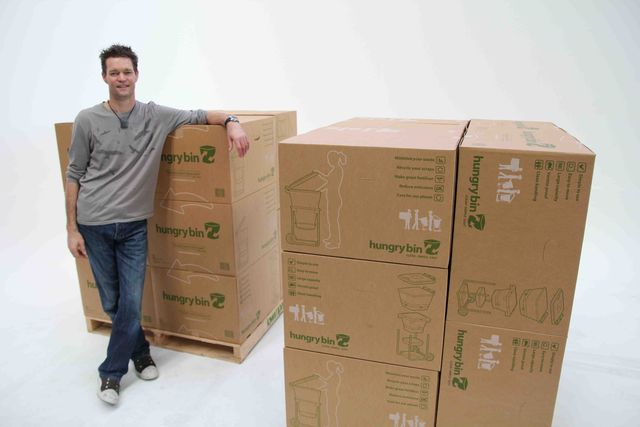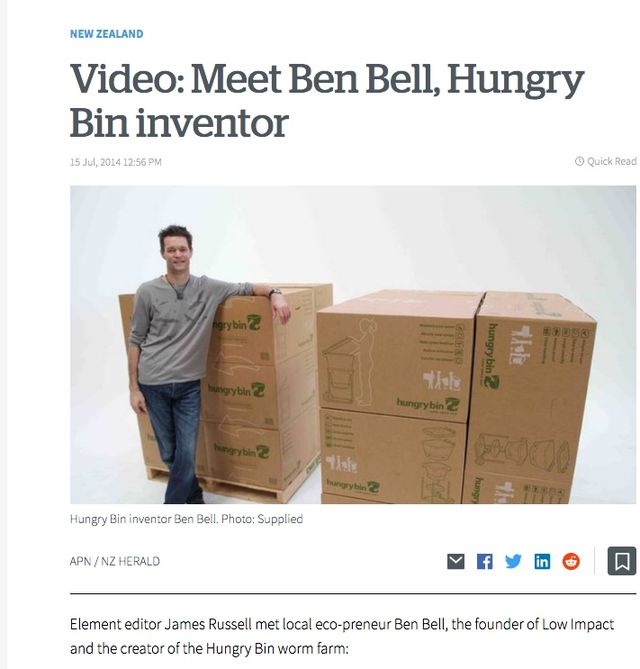About the design

The hungry bin is the result of several years of design development by inventor Ben Bell, of New Zealand. Ben is a keen gardener, composter and worm farmer. He felt that the existing worm farms on the market could do with some improvement, and in true Kiwi spirit he decided to do it himself. The original idea for hungry bin evolved from earlier models Ben created using broken kerbside rubbish bins.
The result of Ben's experimentation is the hungry bin, "the best worm farm ever"!

What is different about the hungry bin?
- Unique design
- Simple to harvest castings
- Highly productive
- No heavy lifting
- Small footprint
The hungry bin is a continuous flow system. When operated correctly, continuous flow systems are far more efficient than worm farms that use stacked trays. The unique shape of the bin creates a large surface area allowing all the worms living in the hungry bin to easily access the food scraps at the top – exploiting the fact they’re surface feeders, and increasing their processing capacity. The tapered sides also encourage the worms to stay on the surface, while compressing their castings below.
Once the compost process is complete, the hungry bin is designed to allow the simple and easy harvest of both finished castings and liquid fertiliser. Harvesting castings does not involve any heavy, messy lifting. The floor of the bin is easily removed, allowing approximately 4 litres (3/4 gallons) of castings to break away at the bottom of the taper. This allows the easy removal of finished castings from the bin. Removing the castings is a relatively clean process. Finished castings are largely free of worms.
The lid is at a comfortable operating height, and convenient to open and close. Tight fitting, it prevents pests from entering but has sufficient venting to create healthy airflow. The hungry bin even has wheels, making moving the bin light work.
Interview with hungry bin inventor


